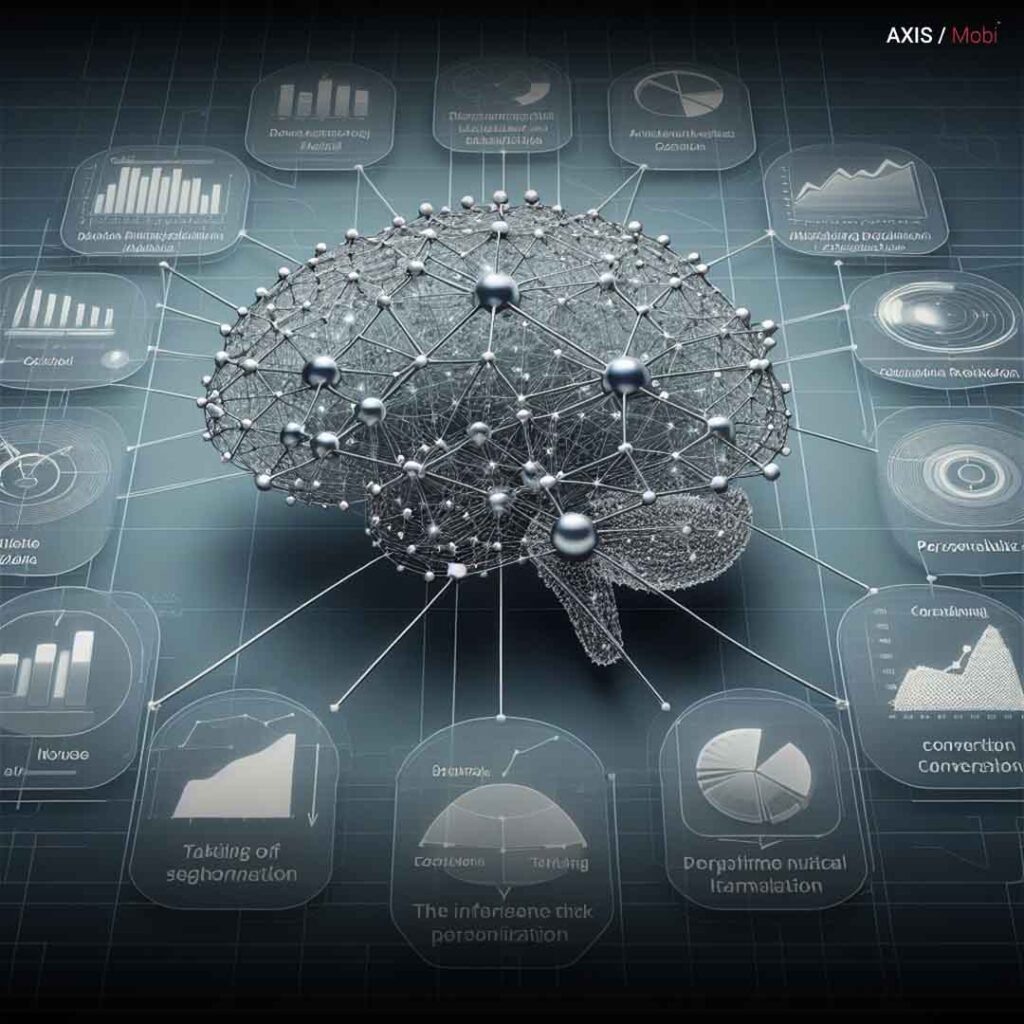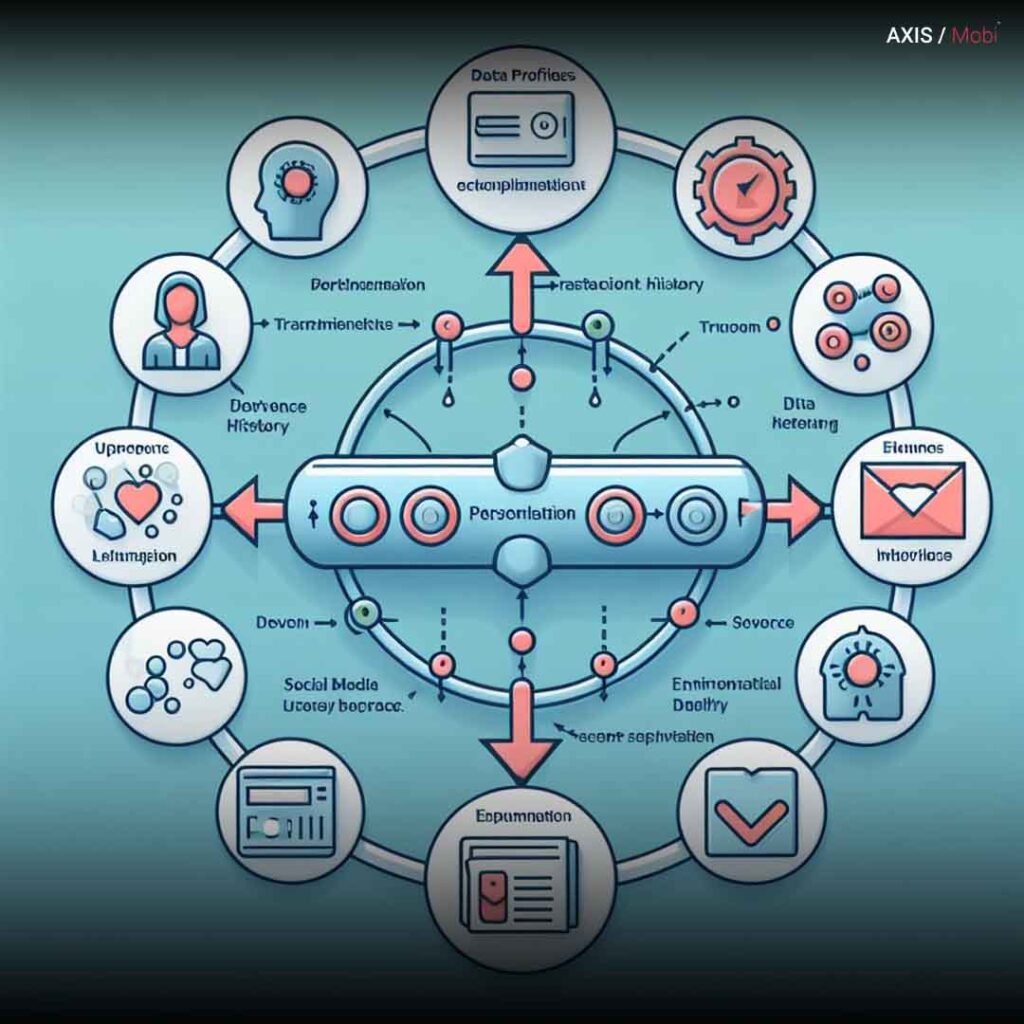In today’s digital age, data has become a powerful asset for businesses. The ability to collect, analyze, and leverage data is transforming marketing strategies, enabling businesses to better understand their customers, personalize their interactions, and drive more effective campaigns. This shift towards data driven marketing is not just a trend; it’s a fundamental change that is reshaping the marketing landscape. In this comprehensive guide, we will explore the world of data driven marketing, focusing on personalization and customer insights, and how these strategies can lead to business success.
What is Data Driven Marketing

Data Driven Marketing is an approach that uses data and analytics to make informed marketing decisions. It involves collecting and analyzing data from various sources, such as customer behavior, preferences, and interactions, to create more personalized and effective marketing campaigns. Data driven marketing is driven by the following key principles:
- Data Collection: Gathering data from various touchpoints, including websites, social media, email marketing, customer surveys, and more.
- Data Analysis: Using advanced analytics tools to process and analyze the collected data, extracting valuable insights and patterns.
- Personalization: Tailoring marketing messages and content to individual customers based on their preferences, behavior, and demographics.
- Customer Insights: Gaining a deep understanding of customer behavior, needs, and motivations to guide marketing strategies.
- Optimization: Continuously improving marketing campaigns based on data and feedback to achieve better results.
The Power of Personalization in Data Driven Marketing

Personalization is at the core of data driven marketing. It involves customizing marketing messages, product recommendations, and content to suit the individual preferences and needs of each customer. Here’s why personalization is crucial:
- Improved Customer Engagement: Personalized content and recommendations resonate more with customers, leading to higher engagement rates.
- Increased Conversions: When customers receive personalized offers or recommendations, they are more likely to make a purchase.
- Enhanced Customer Loyalty: Personalization builds stronger relationships with customers, increasing their loyalty to your brand.
- Better Customer Experience: Customers appreciate relevant content and offers, resulting in a more satisfying shopping experience.
- Higher ROI: Personalized marketing campaigns often deliver a higher return on investment (ROI) compared to generic campaigns.
Data Sources for Personalization

To implement effective personalization, businesses rely on various data sources. Here are some of the key data sources used in data driven marketing:
- Website Analytics: Analyzing user behavior on websites, including pages visited, time spent, and actions taken, to understand customer preferences.
- Email Marketing Data: Tracking email open rates, click-through rates, and conversion rates to tailor email content.
- Social Media Data: Examining social media interactions, such as likes, shares, and comments, to gauge customer sentiment and interests.
- Customer Surveys: Collecting feedback directly from customers to understand their needs and preferences.
- Purchase History: Analyzing past purchase behavior to make product recommendations and personalize marketing messages.
- Demographic Data: Using customer demographics, such as age, gender, and location, to segment audiences and deliver targeted content.
- Behavioral Data: Monitoring how customers interact with your brand, such as their browsing history and interactions with marketing emails.
Implementing Personalization in Marketing
Effective personalization requires the right strategies and tools. Here are steps to implement personalization in your marketing efforts:

1. Data Collection and Integration
- Gather data from various sources and ensure it is clean, accurate, and up-to-date.
- Integrate data from different channels and systems to create a unified view of each customer.
2. Customer Segmentation
- Divide your audience into segments based on shared characteristics, behaviors, or preferences.
- Use segmentation to create targeted marketing campaigns.
3. Personalized Content
- Create personalized email campaigns with dynamic content based on recipient behavior and preferences.
- Use personalization tokens to insert the recipient’s name and other relevant information into marketing materials.
4. Product Recommendations
- Implement recommendation engines that suggest products or content based on a customer’s browsing and purchase history.
- Display personalized product recommendations on your website, email campaigns, and other marketing channels.
5. A/B Testing
- Conduct A/B tests to determine which personalized messages or content variations perform best.
- Use the results to optimize your campaigns further.
6. Marketing Automation
- Implement marketing automation tools that can trigger personalized messages based on customer behavior and milestones.
- Set up automated email sequences and personalized retargeting ads.
7. Personalization at Scale
- Leverage machine learning and AI algorithms to scale personalization efforts, especially in larger customer bases.
- Use predictive analytics to anticipate customer needs and behaviors.
Real-Life Examples of Personalization
Personalization in marketing isn’t just a concept; it’s a practice that many successful companies have embraced. Here are a few examples:
- Amazon: Amazon’s recommendation engine is a prime example of personalization. It uses a customer’s browsing and purchase history to suggest products tailored to their interests.
- Netflix: Netflix analyzes viewing habits and preferences to recommend movies and TV shows, creating a highly personalized streaming experience.
- Spotify: Spotify curates personalized playlists for users based on their music preferences and listening history.
- E-commerce Sites: Many e-commerce websites personalize product recommendations based on what customers have viewed or purchased in the past.
- Email Marketing: Retailers often send personalized email offers and discounts based on a customer’s past shopping behavior.
Leveraging Customer Insights
Data driven marketing not only enables personalization but also provides valuable customer insights that can guide marketing strategies. Here’s how customer insights are harnessed:
1. Customer Behavior Analysis
- Analyze how customers interact with your website, emails, and social media channels to identify trends and patterns.
- Understand which touchpoints are most influential in the customer journey.
2. Customer Segmentation
- Segment your audience based on behavior, demographics, and preferences.
- Tailor marketing strategies to each segment’s unique characteristics and needs.
3. Predictive Analytics
- Use predictive analytics to forecast future customer behavior, such as purchase intent and churn risk.
- Make proactive marketing decisions based on these predictions.
4. Feedback and Reviews
- Pay attention to customer feedback and reviews to gain insights into their opinions and pain points.
- Address customer concerns and use positive feedback as testimonials in marketing materials.
5. Customer Journey Mapping
- Create customer journey maps to visualize the customer experience and identify areas for improvement.
- Optimize touchpoints to streamline the customer journey and enhance satisfaction.
6. Competitive Analysis
- Analyze your competitors’ marketing strategies and customer interactions to identify opportunities and threats.
- Differentiate your brand by offering a superior customer experience.
Tools for Data Driven Marketing
To implement data driven marketing effectively, you’ll need the right tools and technologies. Here are some essential tools used in data driven marketing:
- Customer Relationship Management (CRM) Software: CRM systems help manage customer data, track interactions, and segment audiences.
- Marketing Automation Platforms: These tools enable automated marketing campaigns, email marketing, and lead nurturing.
- Data Analytics and Business Intelligence (BI) Tools: Tools like Google Analytics, Adobe Analytics, and Tableau provide insights into customer behavior and campaign performance.
- Customer Data Platforms (CDPs): CDPs centralize customer data from various sources, making it accessible for analysis and personalization.
- Email Marketing Software: Platforms like MailChimp, HubSpot, and Salesforce Marketing Cloud facilitate personalized email marketing campaigns.
- Machine Learning and AI: Machine learning algorithms and AI tools help automate personalization efforts and predict customer behavior.
- A/B Testing Platforms: Tools like Optimizely and VWO allow you to run A/B tests to optimize marketing campaigns.
Challenges in Data Driven Marketing
While data driven marketing offers numerous benefits, it also presents challenges that businesses must address:
- Data Privacy and Compliance: With stricter data privacy regulations like GDPR and CCPA, ensuring compliance and protecting customer data is paramount.
- Data Quality: Inaccurate or incomplete data can lead to flawed insights and ineffective personalization.
- Data Security: Safeguarding customer data from breaches and cyber threats is a constant concern.
- Integration Issues: Integrating data from various sources can be complex and require significant resources.
- Resource and Skill Constraints: Data driven marketing demands skilled professionals and adequate resources for data collection and analysis.
- Algorithm Bias: Machine learning algorithms may introduce bias in personalization, leading to unintended consequences.
The Future of Data Driven Marketing
The future of data driven marketing is bright and full of possibilities. Here are some trends that will shape the future of this field:
- AI-Powered Personalization: AI and machine learning will play a more significant role in automating personalization efforts and making them more accurate.
- Hyper-Personalization: Marketing messages will become even more tailored to individual preferences and behaviors.
- Voice Search Optimization: As voice search grows, optimizing marketing strategies for voice-based interactions will become crucial.
- Privacy-First Marketing: Businesses will need to prioritize customer data privacy and adopt transparent data practices.
- Augmented Reality (AR) and Virtual Reality (VR): AR and VR will create new opportunities for immersive and personalized marketing experiences.
- Data Driven Storytelling: Marketers will use data to craft compelling stories and narratives that resonate with their audience.
Conclusion
Data driven marketing is not just a buzzword; it’s a fundamental shift in how businesses approach marketing. By harnessing the power of data, organizations can better understand their customers, personalize their interactions, and drive more effective campaigns. Personalization, in particular, is a key driver of customer engagement, loyalty, and conversions.
As data driven marketing continues to evolve, businesses must stay agile, adapt to changing technologies, and prioritize data privacy and security. By leveraging customer insights and embracing the latest tools and trends, businesses can unlock the full potential of data driven marketing and gain a competitive edge in today’s digital landscape.
Frequently Asked Questions (FAQs)
What is Data Driven Marketing?
Data-Driven Marketing is an approach that utilizes data analytics to make informed decisions about marketing strategies. It involves collecting, analyzing, and interpreting data to understand customer behaviors, preferences, and trends, enabling marketers to tailor their campaigns for better effectiveness.
Why is Data Driven Marketing important?
Data-Driven Marketing is crucial as it allows marketers to move beyond assumptions and make decisions based on real insights. By leveraging data, businesses can target their audience more precisely, optimize campaigns, and achieve a higher return on investment (ROI).
How does Data Driven Marketing benefit businesses?
Data-Driven Marketing empowers businesses to understand their customers on a deeper level. It enhances personalized communication, improves customer engagement, and helps in identifying new opportunities. The result is more effective marketing strategies and increased customer satisfaction.
What types of data are used in Data Driven Marketing?
Data-Driven Marketing utilizes various types of data, including demographic information, customer behavior data, website analytics, social media interactions, and transaction history. Combining these datasets provides a comprehensive view for marketers to make informed decisions.
How does Data Driven Marketing impact customer experience?
Data-Driven Marketing positively impacts customer experience by tailoring messages and offerings to individual preferences. This personalization creates a more relevant and engaging experience, fostering customer loyalty and satisfaction.
Are there challenges in implementing Data Driven Marketing?
Yes, challenges include ensuring data accuracy, privacy concerns, and the need for sophisticated analytics tools. Overcoming these challenges requires a robust data governance strategy, compliance with regulations, and continuous investment in technology.
Can small businesses benefit from Data Driven Marketing?
Absolutely. While the scale might differ, small businesses can benefit significantly from Data-Driven Marketing. It helps them understand their niche audience, optimize resources, and compete more effectively by making strategic decisions based on real-time insights.
What role does artificial intelligence (AI) play in Data Driven Marketing?
AI plays a crucial role by automating data analysis, providing predictive insights, and enabling dynamic personalization. It enhances the efficiency of Data-Driven Marketing by handling large datasets and identifying patterns that might go unnoticed with traditional methods.





Pingback: Discover How Brands Leverage Social Media Influencers!
Pingback: Data Driven Marketing Growth: Unlock Business Success